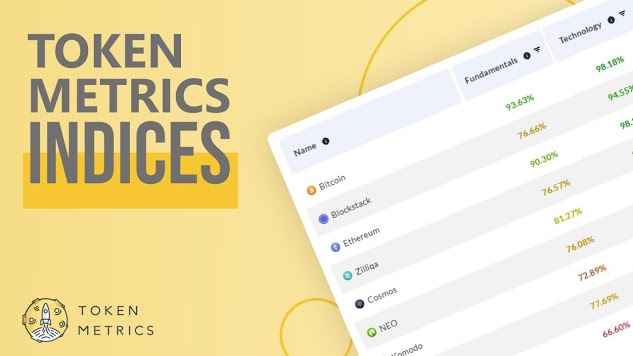
Opinion by: William Campbell, advisory lead at USDKG
Stablecoins were heralded as a breakthrough in the cryptocurrency space as a way to marry the lightning-fast, borderless nature of digital assets with the stability of traditional currencies. They achieve this by pegging their value to reserves like fiat currencies or commodities. Stablecoins are engineered to maintain a fixed exchange rate, typically one-to-one, with the underlying asset.
What does “stability” mean? At its core, stability demands three pillars:
Reliable collateral: The tangible assets that back the token.
Transparency: The ability for anyone to independently verify reserves.
Consistent peg maintenance: Robust safeguards against depegging, where a stablecoin’s market value strays from its fixed ratio with the underlying asset.
Without these foundational elements, stablecoins are little more than speculative instruments masquerading as safe harbors. In 2022 alone, billions in value evaporated when supposedly “secure” stablecoins lost their pegs, meaning their market prices diverged significantly from their intended 1:1 ratio with an underlying asset — prompting an unsettling question: Can digital assets ever be genuinely stable without demonstrable and independently audited backing?
The need for reliable asset-backed models
Recent market events have exposed severe fundamental weaknesses in privately issued stablecoins. These tokens often rely on opaque mechanisms, inadequate audit practices or collateral that investors cannot independently verify.
These shortcomings repeatedly led to sudden “depegging” events, such as the collapse of Iron Finance’s TITAN token in 2021. The overleveraged algorithmic system collapsed to near zero, wiping out billions in liquidity.
TerraUSD’s meltdown in 2022 also highlighted a similar vulnerability, with the stablecoin’s value disintegrating quickly, intensifying doubts about algorithmic models lacking transparent reserves.
Meanwhile, partially collateralized and so-called “fully audited” stablecoins have faced scrutiny for inconsistent disclosure practices. Even well-known issuers must constantly prove their reserves are sufficient and legitimate.
Recent: The state-backed stablecoin coin to change Kyrgtzstan’s (and global) economy
These issues primarily stem from insufficient oversight and ambiguous collateral management practices by private issuers. Investors typically have limited means to independently verify reserves, fueling persistent doubts about whether the stated backing genuinely exists or whether tokens are properly collateralized.
Only models with tangible asset support and verifiably documented reserves can genuinely deliver the stability that digital assets promise. Through transparent frameworks, we can rebuild trust and usher in a new era of reliable digital finance. These events underscore a universal truth: True stability is forged through auditable oversight and verifiable reserves, not hollow branding.
Gold is a timeless anchor
Gold has served as humanity’s ultimate store of value for millennia, preserving wealth through wars, economic collapses and pandemics. Its scarcity, intrinsic worth and universal acceptance have made it a refuge when institutions falter — evidenced by its 25% surge during the 2020 market crash as investors fled volatile assets.
Gold’s value transcends borders and ideologies, resting on tangible scarcity rather than hollow promises. For example, while the US dollar has lost 96.8% of its purchasing power since 1913, gold has consistently preserved and even grown its purchasing power. This track record positions it as an ideal anchor for digital assets seeking stability in a volatile crypto landscape.
Critics of gold might point to its storage and custodial costs, along with the logistical challenges of physically moving bullion. Modern vaulting solutions and robust insurance measures have, however, largely mitigated these concerns, particularly when combined with blockchain-based audit mechanisms.
Gold-backed stablecoins capitalize on this timeless reliability, pairing physical gold’s enduring value with blockchain’s efficiency. By linking digital tokens directly to physical gold, they sidestep the speculative risks of cryptocurrencies and the inflationary pitfalls of government-issued money.
Blockchain-enabled gold tokenization
Blockchain technology removes the traditional obstacles to gold ownership by enabling fractional digital ownership and global trading without intermediaries.
Physical gold stored in regulated vaults is digitized into tokens, each representing a precise fraction of the underlying asset. Every transaction is immutably recorded on a decentralized ledger, enabling investors to continuously check reserves in real time through automated smart contracts.
This system overcomes gold’s historic limitations, including illiquidity and high storage costs, while eliminating the opacity of traditional reserve management. Merging gold’s tangible security with blockchain’s immutable record-keeping, the system also engineers trust directly into the architecture.
This approach creates a stablecoin model unlike any other, where verifiable backing is the system’s backbone, not merely promised on paper.
Creating stablecoins that truly deliver stability
Gold-backed stablecoins merge blockchain’s inherent accountability with gold’s stability, establishing a new class of digital assets resistant to volatility. Anchoring digital tokens to gold’s intrinsic value, this model sidesteps the volatility of speculative cryptocurrencies and the inflationary risks of government-issued currencies.
The result is a stablecoin engineered for trust, where stability isn’t promised by code or institutions — it’s bolstered by tangible scarcity and blockchain’s unyielding transparency.
Trust as a cornerstone
The primary challenge facing stablecoins is establishing user trust. This trust can’t be built solely on a company’s reputation. It must be earned through independently verifiable collateral, real-time audits and clear regulatory oversight.
Innovative hybrid models showcase this approach effectively. The government strictly regulates and audits the gold reserves in a hybrid model to maintain verifiable 1:1 backing. The private entities handle token issuance, trading and compliance processes, carefully separating state verification of collateral from private management of operational functions.
This public-private partnership ensures rigorous oversight without creating a central bank digital currency. As they divide responsibilities, the model establishes a system where the government guarantees authenticity and collateral integrity while private enterprises handle operational efficiency, ensuring a balanced and decentralized yet trustworthy environment.
Toward a more trustworthy digital financial ecosystem
Genuine stability in digital finance emerges not from marketing slogans but from transparent mechanisms and verifiable collateral.
The future of digital finance lies in combining blockchain’s revolutionary transparency with the historically proven stability of gold, especially under government auditing and privately managed structures. As more asset-backed solutions emerge, institutions, regulators and everyday users will adopt stablecoins that transparently deliver on their stability promises.
This evolution marks a pivotal shift. Investors will no longer accept vague assurances. Investors demand concrete stability. Gold-backed stablecoins, blending ancient reliability with blockchain innovation, will lead the next generation of digital financial instruments, ensuring stablecoins fulfill their original promise — stability without compromise.
Opinion by: William Campbell, advisory lead at USDKG.
This article is for general information purposes and is not intended to be and should not be taken as legal or investment advice. The views, thoughts, and opinions expressed here are the author’s alone and do not necessarily reflect or represent the views and opinions of Cointelegraph.




Be the first to comment